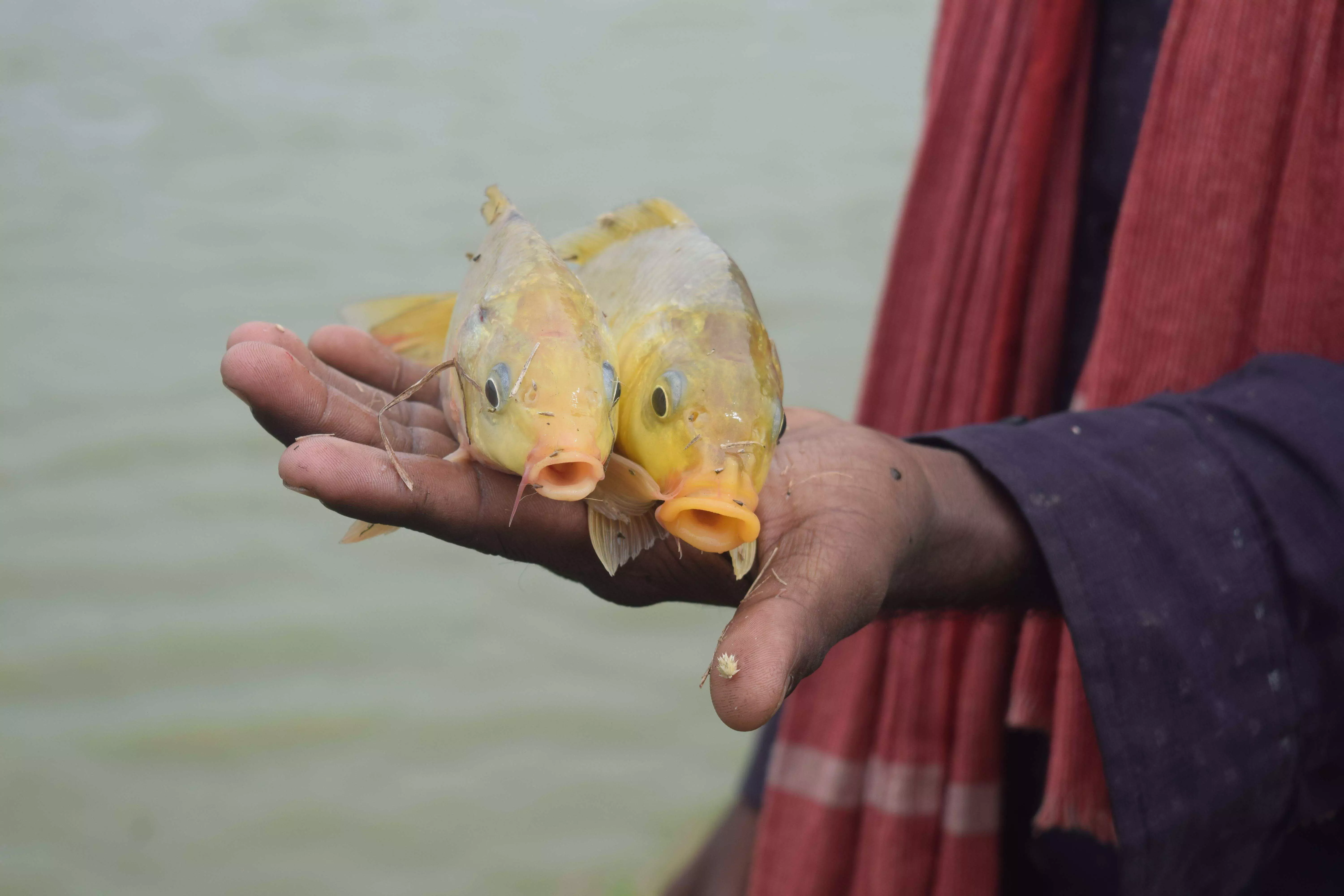`Fish for success': Narayanpet farmer harvests benefits of aquaculture
Besides paddy and cotton cultivation, aquaculture is also becoming popular among the people in Narayanpet.
By Nimisha S Pradeep
Farmer Musaliar Palli Suresh looks expectantly into a pond at Rudrasamudram village in Narayanpet district. Small baby fishes that he had released into the pond two months back have grown in size. The medium-sized fishes that swim gleefully onto the top occasionally create ripples.
Hope and happiness galore as Suresh await his first harvest by March 2022. In his 5-acres farm, Suresh breeds Catla, Rohu, and Golden Fish.
Suresh had applied for a government subsidy under the Integrated Fisheries Development Scheme in 2018. Two years, he received approval. In October 2020, he prepared the land for fish culture.
"Usually, a wasteland is used for fish farming. But, Suresh is cultivating fish in a valuable agricultural land. In fact, he has turned his own paddy field into a fish pond," says Anil Kumar, an officer at the Fisheries Department.
Musaliar Palli Suresh, a fish farmer in Narayanpet
Around 5000 to 6000 baby fishes were released into the water by the end of September 2021. "Three months after the baby fish is released into the pond, the weight of the fish will increase to 300 gms. After 5-6 months, the fish weighs around 500 gms to 1kg," explains Suresh.
They are fed according to their characteristics. Catla, which has its mouth in an upward direction, gets its food from the top layer of the pond. Rohu has a straight mouth, so it gets its food from the middle of the pond and the Golden Fish has a downward-facing mouth that enables it to obtain food from the depths of the pond.
"For normal fishes, there is hardly any maintenance cost. These fishes just need atmospheric oxygen and have to be fed only once a day. Other than that, they live on phytoplanktons and other natural food available in their environment. So, apart from setting up the tank, filling it with water, and buying the fish, there is not much cost involved," explains Suresh.
The proximity of the land to the main road is an added advantage as it reduces transportation costs. Suresh is single-handedly looking after the fish. So there is no expenditure on manpower also.
Harvesting fish is not an easy task. According to Suresh, it requires nearly 10 people to catch the fishes that weigh kilograms and pull them out of the water. After this, they weigh the fishes, pack them and send them to the markets in and around Narayanpet.
Around 50 to 100 acres of land in Narayanpet is dedicated to fish breeding. With every catch reaping good yield and due to its throughout-the-year feasibility, more and more farmers are taking up aquaculture. Besides paddy and cotton cultivation, aquaculture is also becoming popular among the people in Narayanpet.